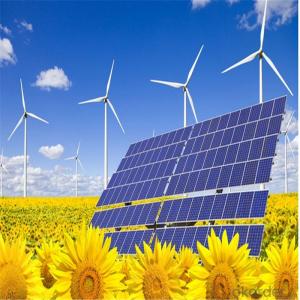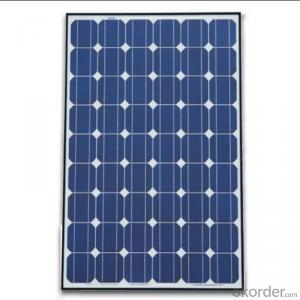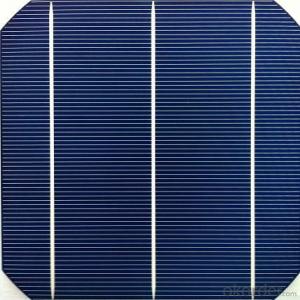225 Watt Home Depot Solar Cells Poly Solar Power Photovoltaic Cells
- Loading Port:
- China main port
- Payment Terms:
- TT or LC
- Min Order Qty:
- 1000 watt
- Supply Capability:
- 500000 watt/month
OKorder Service Pledge
OKorder Financial Service
You Might Also Like
Specification
Instruction
Quality and Safety
1. Rigorous quality control meets the highest international standards.
2. High-transmissivity low-iron tempered glass, strong aluminium frame.
3. Using UV-resistant silicon.
4. IS09001/14001/CE/TUV/UL
5.3w-300w mono & poly solar panel supply
Warranties
1. 10 years limited product warranty
2. 15 years at 90% of the minimal rated power output
3. 25 years at 80% of the minimal rated power output
Feature
1. High efficiency and High power.
2. Long-term electrical stability.
3. Lowest price and Fastest delivery.
4. Good quality and good service.
5.Bulk supply
6. Good Warranty
7.Big Sale
8.High quality
9.More than 35 years on the lifetime.
10 DHL/Fedex/UPS/TNT/EMS etc
Images


Specification
Model | SIM-100 |
Maximum Power at ST(Pmax)W | 100Wp |
Maximum Power Voltage(Vmp)V | 18.0V |
Maximum Power Current(Imp)A | 5.56A |
Open Circuit Voltage(Voc)V | 22.0V |
Short Circuit Current(Isc)A | 5.9A |
Cell Efficiency(%) | 17.0% |
Module Efficiency(%) | 15.37% |
Operating Temperature°C | -40°C to 85°C |
Maximum system voltage | 1000V(IEC)DC |
Power tolerance | -0.03 |
Temperature coefficients of Pmax | -0.45%/°C |
Temperature coefficients of Voc | -0.27%/°C |
Temperature coefficients of Isc | 0.05%/°C |
Weight(kg) | 7.4 |
Number of cell(pcs) | 4*9 |
FAQ
We have organized several common questions for our clients,may help you sincerely:
1). What’s price per watt?
A: It’s depends on the quantity, delivery date and payment terms of the order. We can talk further about the detail price issue. Our products is high quality with lower price level.
2). Can you tell me the parameter of your solar panels?
We have different series of cells with different power output, both from c-si to a-si. Please take our specification sheet for your reference.
3). How do you pack your products?
We have rich experience on how to pack the panels to make sure the safety on shipment when it arrives at the destination.
4). How long can we receive the product after purchase?
In the purchase of product within three working days, We will arrange the factory delivery as soon as possible. The perfect time of receiving is related to the state and position of customers. Commonly 7 to 10 working days can be served.
Solar Power Photovoltaic cells Cleaning method:
Cleaning steps: 1, observation, analysis 2, washing, brushing 3, over water.
1. Observed and analyzed
Check before cleaning pollution levels to be cleaned panels first. If it is light pollution - no particulate matter, only dust. We recommend rinsing or brushing alone only work on it. This will not only save, save manpower and resources, but also to extend the panel surface to maintain a certain brightness of life. It can increase its life!
2. Washing, brushing
When you need deep cleaning if you find that the surface particulate matter cannot be determined or not. It must first be rinsed, washed away after the scrub particles. Why scrub? Jobs can only flush out dust on the surface of the particulate matter, especially particulate matter. The effect can be said to be perfect. However, for a certain viscosity or pollutants generated due to chemical reaction is not complete. If let it develop over time, it will no longer be cleansed of these pollutants.
3. Over-water cleaning
This step is very important! Do not scrub in order to save after not rinse again. Flushing process will scrub clean down microscopic dust particles and other debris thoroughly washed with water from the panel surface.
Operating and staffing for Solar Power Photovoltaic cells
The general altitude operations (like cleaning the top of the building panels) we press a device with three-man team. Ground staff responsible for operations and support staff houses above hosts. Altitude cleaning operations (must be equipped with personal security) require two people, not only for the safe custody, but also for job rotation, rest. Such cooperation, whether or cleaning equipment utilization efficiency is relatively high; cleaning terrestrial photovoltaic power plants is relatively simple, one or two people can be. It does not impact on productivity.
- Q: Can solar cells be used in remote monitoring systems?
- Yes, solar cells can be used in remote monitoring systems. Solar cells are an efficient and sustainable source of energy, making them ideal for remote locations where access to electricity may be limited or non-existent. By harnessing sunlight, solar cells can power remote monitoring systems, enabling continuous data collection and communication in these areas.
- Q: How does the efficiency of solar cells vary with different materials?
- The efficiency of solar cells varies with different materials due to their unique properties and ability to absorb and convert sunlight into electricity. Certain materials, such as monocrystalline silicon, have high efficiency rates due to their ability to efficiently convert a larger portion of sunlight into electricity. On the other hand, materials like amorphous silicon or thin-film solar cells have lower efficiency rates but offer other advantages such as flexibility and cost-effectiveness. Overall, the efficiency of solar cells is heavily influenced by the materials used and their specific characteristics.
- Q: What is the impact of fire hazards on solar cells?
- Fire hazards can have a significant negative impact on solar cells. High temperatures caused by fires can damage or melt the delicate components of solar cells, leading to a decrease in their efficiency or complete malfunction. Additionally, smoke and debris from fires can cover the surface of solar panels, reducing their ability to absorb sunlight and generate electricity. Therefore, fire hazards pose a serious risk to the functionality and longevity of solar cells.
- Q: Can solar cells be used for space applications?
- Yes, solar cells can be used for space applications. Solar cells are commonly used in space missions to convert sunlight into electricity, providing power to satellites, space probes, and even manned spacecraft. The abundance of sunlight in space makes solar cells an ideal and reliable source of energy for various space applications.
- Q: Doping and Diffusion Principle in Solar Cell Processing
- In some inorganic solid compounds doped with different metal ions, can be different properties of luminescent materials, such as yttrium oxide (III) doped with europium (III) ions can be red fluorescent materials.
- Q: Which Solar Panel Type is best? Polycrystalline panel or PV Module Monocrystalline Solar cell panel, or thin film?
- PV Module Monocrystalline Solar cell panels is most efficient since they are made from the highest-grade silicon.
- Q: Can solar cells work in cloudy weather?
- Yes, solar cells can still work in cloudy weather, although their efficiency may be reduced. Clouds diffuse sunlight, causing a decrease in the amount of direct sunlight reaching the solar cells. However, solar cells can still generate electricity from the diffused sunlight, although at a lower rate compared to sunny conditions.
- Q: What happens to excess electricity generated by solar cells?
- Excess electricity generated by solar cells can be stored in batteries for later use, or it can be fed back into the grid to be used by other consumers.
- Q: Can solar cells be used in desalination plants?
- Yes, solar cells can be used in desalination plants. Solar energy can be harnessed to power the desalination process, either directly or indirectly. Direct methods involve using solar panels to generate electricity to power the desalination process, while indirect methods involve using solar thermal energy to heat the water and drive the desalination process. Both methods have been successfully implemented in various desalination plants around the world, offering a sustainable and environmentally-friendly solution to produce fresh water.
- Q: Can solar cells be used on wearable technology?
- Yes, solar cells can be used on wearable technology. They can be integrated into various devices such as smartwatches, fitness trackers, and even clothing to provide a sustainable source of power. This allows wearables to be charged using sunlight, reducing the dependency on traditional charging methods and increasing their mobility and convenience.
Send your message to us
225 Watt Home Depot Solar Cells Poly Solar Power Photovoltaic Cells
- Loading Port:
- China main port
- Payment Terms:
- TT or LC
- Min Order Qty:
- 1000 watt
- Supply Capability:
- 500000 watt/month
OKorder Service Pledge
OKorder Financial Service
Similar products
Hot products
Hot Searches
Related keywords


























